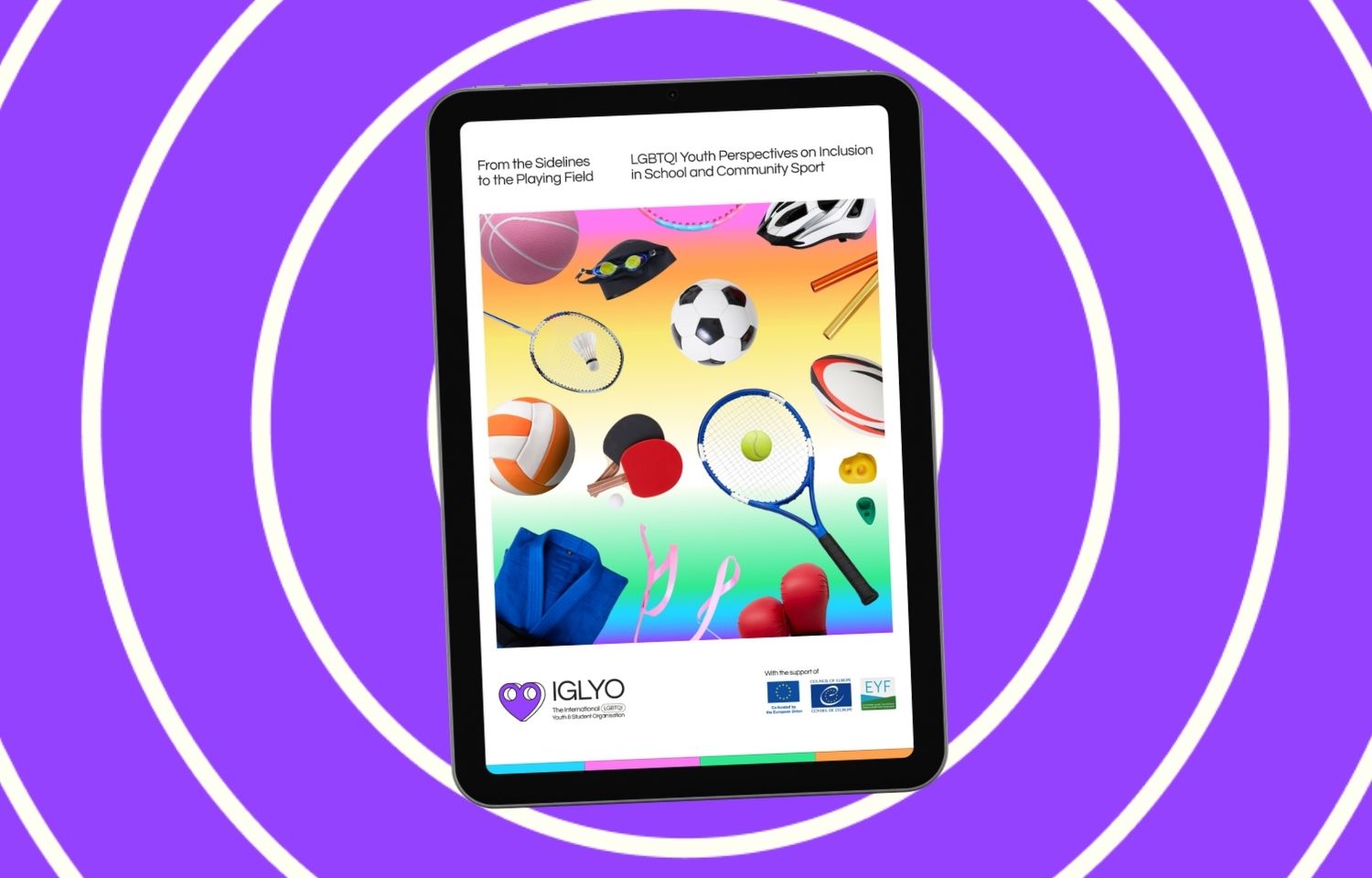
From the Sidelines to the Playing Field: LGBTQI Youth Perspectives on Inclusion in School and Community Sport
IGLYO — The International LGBTQI Youth & Student Organisation launches a powerful new qualitative study centring the lived experiences of LGBTQI young people in school and community sport and putting forward recommendations to create more inclusive sport environments.
Sport plays a vital role in young people’s development, fostering health, confidence, teamwork, and belonging. Yet, LGBTQI young people — in particular non-binary, trans, and intersex youth — keep on facing structural barriers, unsafe environments, and stigma in sport, which can lead to heavy psychological costs, and deter them from engaging in sport later in life. These challenges extend beyond interpersonal dynamics to the rules and norms that structure sport. Binary, heteronormative frameworks remain the default, misrecognising or invalidating diverse identities and imposing medicalised eligibility criteria inappropriate for young people.
Non-binary, trans, and intersex youth face especially acute barriers, from exclusion under claims of fairness and safety to being left without any category of participation. Such exclusion carries heavy psychological costs, with heightened risks of anxiety, depression and diminished self-worth, compounded by intersecting factors like race, disability, class, and migration status.
Against this backdrop, IGLYO publishes From the Sidelines to the Playing Field: LGBTQI Youth Perspectives on Inclusion in School and Community Sport, a qualitative study documenting LGBTQI young people's lived experiences in school and community-based sports. By placing their perspectives at the centre through 27 in-depth interviews, complemented by nine stakeholder consultations, this study aims not only to deepen understanding of the situation, but also to ensure that their realities shape future policy and advocacy.
This publication presents the main findings structured around three themes — access and participation, safety and exclusion, and affirmation and visibility —, and integrates examples of promising practices that can inform action at European, national and local levels. It also puts forward concrete recommendations for policymakers, sport institutions, educational actors, and youth organisations to ensure that sport remains a space where the human rights of every young person — regardless of sexual orientation, gender identity, gender expression or sex characteristics — are fully respected.